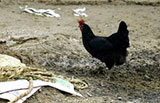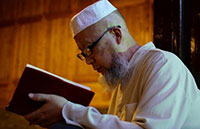China embraces the world in rock art
By Le Qin (chinadaily.com.cn) Updated: 2015-07-06 11:38
Opening ceremony of China Rock Art Exhibition, Capital Museum, Beijing, on July 5. Provided to China Daily
The 2015 Primitive Language – China Rock Painting Exhibition opened at the Capital Museum in Beijing, on Sunday, July 5, with the purpose of preserving and increasing research on this ancient form communication between human beings, in China and around the world.
Rock art dates back to the Stone Age and the UNESCO World Heritage list has 36 rock art heritage sites out more than 900 cultural heritage sites worldwide, but none of them in China. But, this year is the centennial of China’s rock painting research, started by Prof Huang Zhongqin of Lingnan University (Sun Yat-sen University) in Fujian province in 1915. Huang and his colleagues studied rock art in Fujian’s Hua’an county and published a paper, “Taixi Ancient Writings”, which is considered the very beginning of rock art research and preservation in modern China.
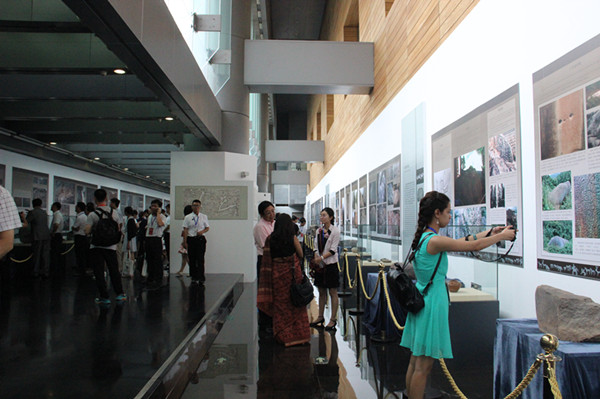
Visitors touring the China Rock Art Exhibition, in Beijing, on July 5. Provided to China Daily
So, the exhibition also hosted the 2nd International Rock Painting Forum, with Emmanuel Anati, founder and executive head of the Centro Camuno di Studi Preistorici in Capo di Ponte, Italy, and nearly 120 rock art specialists from India, Peru and 20 Chinese provinces taking part.
And, China is rich in rock art, with the earliest discovery dating back to the Warring States Period (475-221 BC).
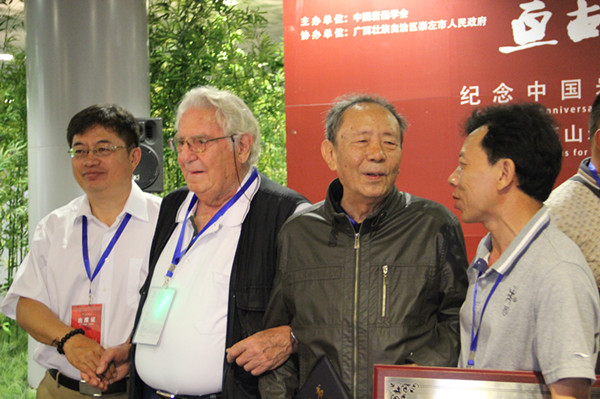
Emmanuel Anati (2nd L), executive head of Italy’s Centro Camuno di Studi Preistorici, and Chen Zhaofu (2nd R), Central University of Nationalities professor, at the event. Provided to China Daily
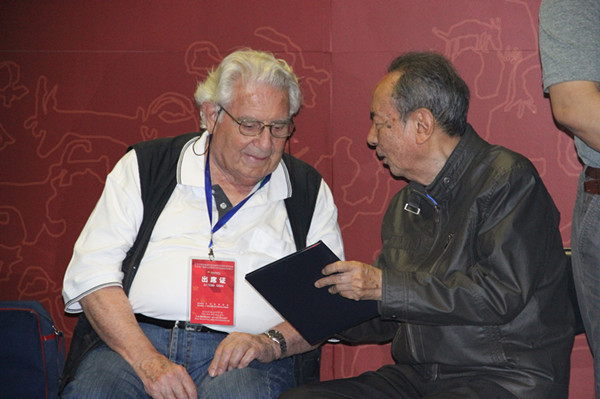
Emmanuel Anati and Chen Zhaofu discussing their work. Provided to China Daily
Wang Jianping, chairman of the China Rock Art Academy, in the city of Bayannur, Inner Mongolia, addressed the opening ceremony of the exhibition by noting, “Across China, there are 1,228 rock art sites in 28 provinces and regions, and Hong Kong, Macao and Taiwan as well. The wide distribution and large number of Chinese rock art sites are a basic part of global rock art.”

Outstanding Contribution award winners with Emmanuel Anati. Provided to China Daily
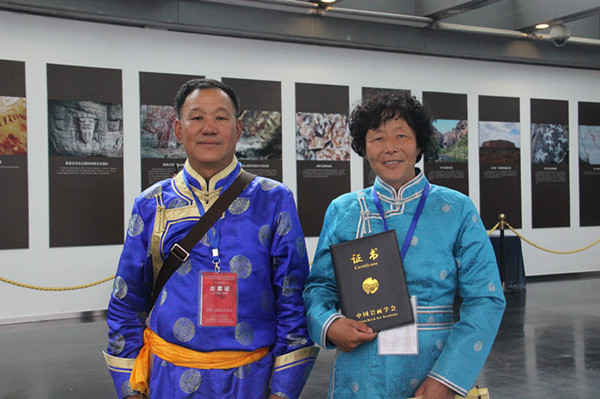
Alata (R), a shepherdess from Inner Mongolia, with her Outstanding Contribution award. Provided to China Daily
The gathering also saw 10 people getting an Outstanding Contribution award for their research and preservation in Chinese rock art, one of them, Chen Zhaofu, a Central University of Nationalities professor, who is 82 years old, and who said that he hopes more young people will get involved in Chinese rock art research. As for joining the UNESCO World Heritage list, Chen says he’s confident, that “it’s only a matter of time”.
One shepherdess from Inner Mongolia, Alata, was another award winner for having assisted the researchers who said she was really proud of getting the award and that three generations of her family have lived in her hometown, and that she has contributed a lot to rock art discoveries over the decades.
There was also a performance, “Yinshan Mountain, Ancient Songs” the evening of July 5, with a rock art theme.
The Exhibition itself will run for two months.

Interior of the China Rock Art Exhibition hall, Capital Museum, Beijing. Provided to China Daily
- Social media blamed for huge rise in the number of divorces
- Rules set to fix financial problems
- Tougher action on child sexual abuse signaled
- Big data plays bigger role in China's admin management
- 12 dead in East China shoe factory collapse
- China's export of civilian drones surges
- China copyright society says film, TV theft frequent
- Chinese, Russian premiers agree to work for fruitful regular meeting
- ROK official falls to death in NE China
- PLA holds military drill in HK, locals invited to observe


